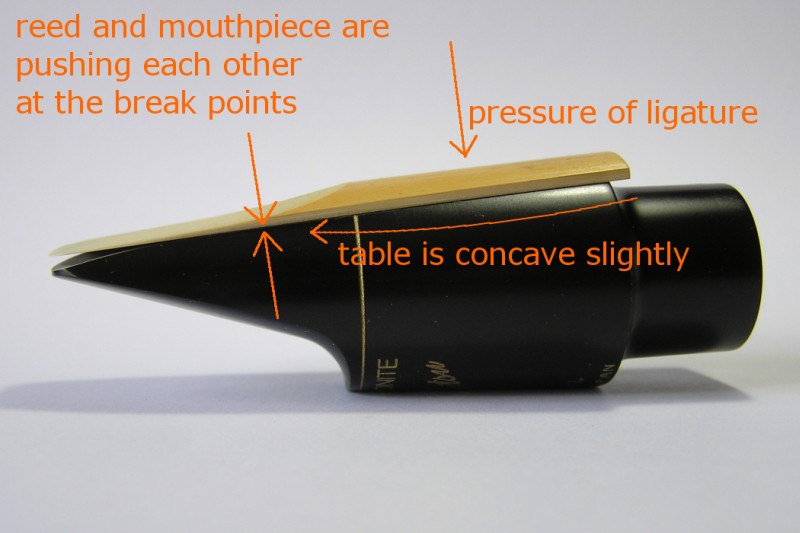The Best Table Is Not Flat
The Table is the part of the mouthpiece that the reed is clamped onto by the ligature. Okutsu Mouthpieces make all tables very slightly concave from front to back. The concave table makes the tone full and the lives of the reeds long.
The facing curve begins at the split point of the side rails, as shown in the photo below. For the combination of a mouthpiece and a reed, it is the most important to make no leaks at the break points.
The break points are fulcrums of the vibration of the reed. If there are any slight leaks, the reed can not vibrate efficiently. The sound become dull and stuffy and maybe with many squeaking error tones.
The concave table is the equipment which the high quality mouthpieces have traditionally to avoid the leaks at the break points.
When the reed is clamped on the concave table, the reed is bent slightly by the pressure of the ligature. This causes the reed and the mouthpiece to push against each other at the break points.

Used reeds become warp by the moisture. When the warp is slighter than the concavity on the table, the influence of the reed warp is canceled. It is the advantage of the concave table. It makes the tone full and the practical life span of reeds is lengthened.
Some mouthpiece makers and refacers insist that the perfect flat table is the best design. I don’t agree with the opinion. The perfect flat table is suitable with only the perfect flat reeds. But used reeds with flat back are very few.
